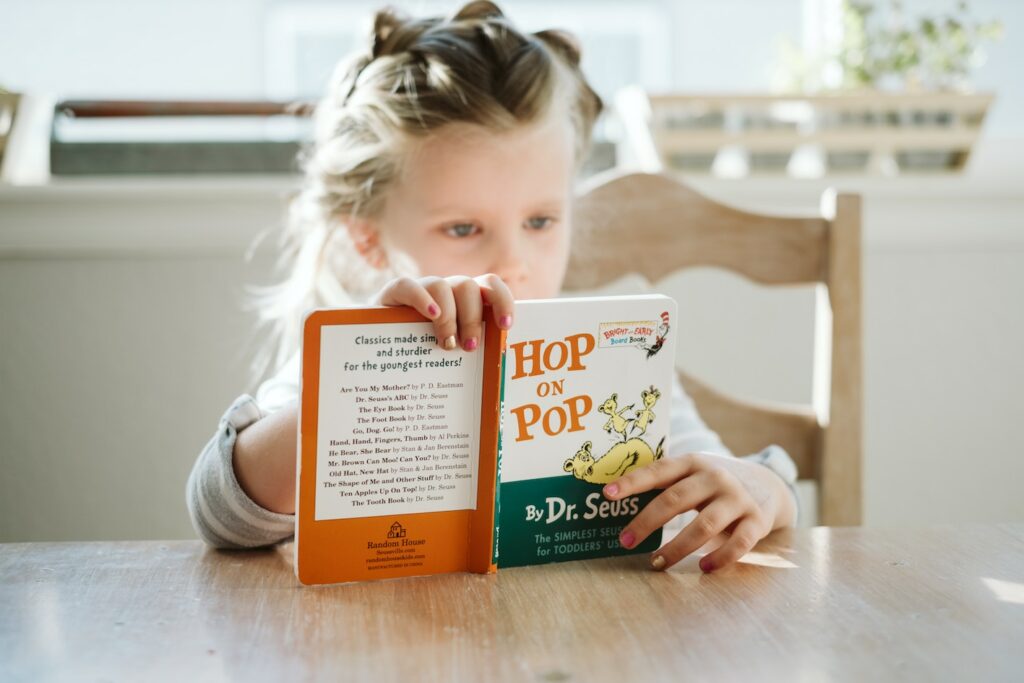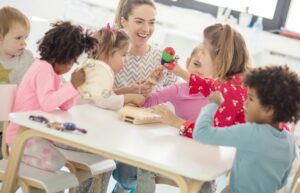What is phonological awareness?
Phonological awareness can be described as having the awareness of what sounds are and how they come together to make words. It is an umbrella skill that includes identifying and manipulating units or parts of oral language – for example, words, syllables, onsets and rimes. It is meta-cognitive, (i.e., an awareness/ability to think about one’s own thinking) for the sound structures of language. It allows one to attend to, discriminate, remember, and manipulate sounds at different levels. Phonological awareness is an important foundation for reading.
What are the stages of phonological awareness?
Children don’t start developing specific phonological skills until around the age of three years old, but we must not forget that they have been developing their listening skills since before birth, in their mother’s womb. Very young children can become aware of environmental sounds such as the phone ringing, dogs barking, taxis hooting and thunder.
Around the age of three years old, children start to recognise rhymes, when they get exposed to simple rhymes from creche or school or caregivers. For example, Humpty Dumpty and Wielie-wielie-walie.
Awareness of syllables starts developing from around the ages of four to five years old. A child realises that words are made up of syllables, for example, “Can you clap and count how many syllables are in your name?”.
Awareness of onsets and rime sounds occurs around the age of six years old. Here the child starts to identify the beginning, middle and ending sounds in words, for example, “What is the first sound in the word ball?”. At a similar age children also start to blend sounds heard on an auditory level into words, for example, after hearing /d/ /o/ /g/ in a stretched out pronunciation the child says “dog”.
The last two steps of phonological awareness develop around the age of seven years old and this is where phonological segmentation and manipulation develop. Phonological segmentation is the ability of a child to segment or break up words into their different sounds, for example, “How many sounds do you hear in the word mat?”. They also start to manipulate sounds to make new words, for example, “What word would we make if we changed the /c/ sound in cat to a /m/?”
How do these skills influence a child’s ability to read?
Learning to read is a complicated process. Children have to be able to hear and identify individual sounds in speech; then recall the letters of the alphabet to match to each sound, and finally blend the letters together to decode words.
What makes this process even more complicated, is that letters represent different sounds in the English language, for example, the letter g can represent the sound “g” like in goat and “j” like in giraffe.
How can teachers, therapists and parents help children understand all this information? And how can we help improve our children’s phonological awareness skills?
- Sing songs that have rhyming words in them, for example, “Hickory Dickory Dock – the mouse ran up the clock”.
- Play ‘Rhyme Time’ where you say I am thinking of an animal that rhymes with big – pig. Yes, and what other words rhyme with pig? (wig, fig, dig)
- Read rhyming books like Room on a Broom by Julia Donaldson or Hog in the Fog by Julia Copus.
- Play silly tongue twisters like “She sells sea shells on the sea shore”.
- Play “I spy with my little eye” to get your child more aware of the beginning sounds of words.
- Play “Sound Sleuth” where your child needs to walk around the house and find objects starting or ending with a specific sound.
- Use Lego bricks or beads to help your child count how many sounds are in each word, for example, cat = c – a – t would be three sounds, so three beads or bricks.
- Robot Talk – say a word stretched out with every sound separated by about a second of time, for example, /s/…../l/…./a/…../p/ and your child needs to jam the sounds together to respond “slap”.
What role does a Speech-Language Therapist (SLT) play in helping with your child’s literacy?
Speech-language therapist’s play a key role in developing phonological awareness and literacy, collaborating with teachers and providing instruction around phonemic awareness and related literacy skills. We are also involved in assessing and providing intervention for students with reading and writing disorders (American Speech-Language Hearing Association). For more information, visit www.bellavista.org.za
About Bellavista SHARE
Bellavista S.H.A.R.E. is the Education Resource Centre of Bellavista School, an independent school in Johannesburg that is widely regarded as a centre of excellence in the field of remedial education. With the Bellavista S.H.A.R.E initiative, the school harnesses the collective capacity it holds within its own staff to improve the quality of educational delivery in Southern Africa by sharing its wealth of professional knowledge, experience, and collective expertise with the community of educators and health professionals working with children in the region.




